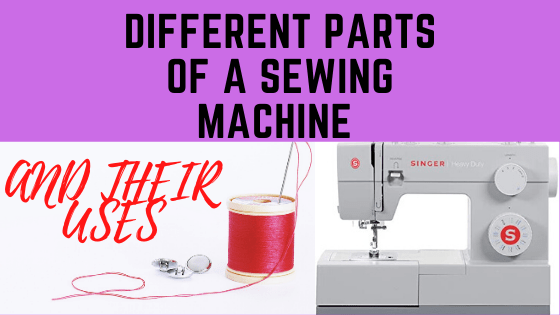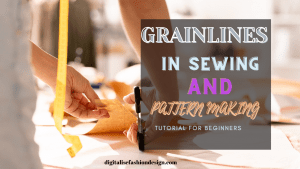A lot of mistakes and frustrations in sewing can be avoided by getting to know your sewing machine.
.After you have bought your machine,it is advisable to learn the different parts of a sewing machine and their USES.
If I had learned these parts when I first started sewing,it would have saved me hours of stress.
There is nothing as stressful like trying to troubleshoot a sewing machine you know nothing about.
Getting to know the different parts of a sewing machine is not a waste of time. On the contrary it is a great time saver.Before you jump to start sewing,get to know the parts of your sewing machine first.
In this blog post I will be showing you the different parts of my sewing machine. (HEAVY duty singer).
There are other sophisticated machines with more complicated parts. That is just so you know.In this post however I will be talking about the basic parts that most simple sewing machines have.
SWITCH AND CORD
Most machines come with two wirecords attached to a header. The header goes to the machine. One end of wire is attached to the motor foot pedal. The other goes to the sucket or detention that suppliers the electricity.
The switch is used to turn the machine on and off.

THE MOTOR/FOOT PEDAL.
This is normally controlled by the foot.It comes in different colors and sizes.
This is where you can control the sewing speed of the machine. The more pressure you apply, the faster the sewing speed. The foot pedal is a component of parts of a sewing machine.
There are, however, some sewing machines that come with the ability to set the sewing speed and control it with just a push of a button.
REVERSE STITCH LEVER
A reverse lever is used for REVERSE stitches. This is done at the end of sewing two fabrics together. This secures your fabrics tightly.With this function, you don’t need to tie your threads manually at the end of every sewing.The machine will sew in the opposite direction when the control lever is raised up or pushed.
HAND WHEEL
This is situated at the side of the machine. It is used to control the position of the needle; it can be used to slowly raise or lower the needle. This gives you the ability to properly position your fabrics before sewing. Sewing machines come with a clutch knob inside the hand wheel.
When this is turned anticlockwise, it can stop movement of the needle all together. This is particularly important when winding a bobbin.
Some other Machines have other ways of stopping the needle movement
SPOOL PIN
The primary function of the spool pin is to hold the sewing thread in position.
BOBBIN WINDER,BOBBIN AND BOBBIN CASE.
The bobbins come in two basic forms. Plastic or metal forms. The thread is usually wind around the bobbin . The bobbin is held in place by a bobbin Winder.

This is normally located at the top right side of sewing machines. Bobbins are small packages that carry the bottom sewing thread . The threaded bobbin is usually housed by the bobbin case . The thread tension from the bobbin can be adjusted through the bobbin case .
The bobbin case is usually found under the needle plates. Bobbin cases are specific for different sewing machine types. It cannot be interchanged.
BOBBIN WINDER STOPPER
This is a useful tool that stops the bobbin winder when the thread on the bobbin has reached its full capacity
GET MY FREE YOUTUBE STEP BY STEP GUIDE TO CRAET THE BEUTIFUL ANKARA LEATHER WALLET
STITCH LENGTH DIAL
This is used to control stitch length. The stitch length control occurs at the feed dog. The feed dog reduces the amount of fabric that is fed under the presser foot before the needle comes down. The range of stitch length for most sewing machines is usually is millimeters.
THREAD TENSION DIAL.
This controls the firmness or looseness of a stitch. The higher the tension dial, then the tighter your stitches will be.
A good tension setting is needed for the thread to be fed uniformly to the needle. The beauty of your stitches is related to the tension setting.
THE SLIDE PLATE
The slide plate covers the housing of the bobbin. It protects the bin from dust
It also allows you to have access to the bobbin either to change it or clean the area.
THREAD CUTTER
Not all sewing machines have Thread cutters . For those. It is located behind the needle. I personally prefer to use a separate thread cutter as one of my sewing accessories.
FEED DOG.
This is a teeth like component of the sewing machine . That protrudes through four parallel spaces on the throat plate. It works together with the presser foot to move the fabric one stitch per time. It’s also plays a role in adjusting fabric Stitch length.
PRESSER FOOT
This holds the fabric firm on the feed dog. Making it easy for the feed dog to move the fabric as the needle moves. There are different forms of presser foot. The shape and size of each presser foot depends on their uses.

Check out this blog post I found that explains all the different sewing machine presser foot with picture illustrations.Or better still, you can watch the youtube video below.
Presser foots are very handy for sewing different kinds of projects.And the most exciting thing is that you can actually buy all the different presser foot you need in one packet!
This blog post contains affiliate links, which when you click and purchase a product will earn me a commission at no cost to you.Please not that I have worked with this products and that is why I recommend them to you.I have found them to be quite useful in my sewing projects
Sewing machines typically come with different kinds of presser foot. Some sewing machines come with pressure dials. These are used to control amount of pressure exerted by the presser foot on the fabric .
Most lighter weight Fabrics require higher pressure for a good fabric movement control.
Below are some cost effective presser foot packs

BIGTEDDY 15pc Domestic Sewing Machine Snap-On Presser Walking Foot Kit for Brother, Singer, Babylock, Janome, Pfaff
THROAT PLATE.
This is usually in metal form; the throat plate houses the hole for the needle to meet the bobbin thread.
It also has millimeter-sized seam stitching guides. It provides parallel spaces for the feed dog to move conveniently.It is the cover for where the bobbin and bobbin case are housed.
PRESSER FOOT LEVER
This is used to control the positioning of the presser foot .Upward movement disengages the presser foot while the downward movement engages the presser foot on the fabric .
THREAD TAKE UP LEVER.
The top thread is passed through this part when threading your sewing machine. The take up lever moves up and down during the sewing process .Its primary function is to regulate the needle thread tension while feeding the upper thread to the needle during the sewing process .
FACE PLATE
This is a movable part on the left side of the sewing machine. It covers the internal working elements of the sewing machine.The face Plate, sometimes houses the sewing light bulb . This normally comes on when the machine is switched on.
MACHINE NEEDLE
The machine needle is normally fixed in place with the needle screw located near the needle bar.
Machine needles come in different sizes the kind or type of needle you use is dependent on the kind of fabric you are working with at the time .
Here are some related eBooks on using your sewing machines that might interest you
.A PRESENT FOR YOU FOR READING TO THE END OF THE BLOG.
CONCLUSION
Knowing the different parts of your sewing machine is very important. It really helps you when you want to oil or maintain your sewing machine.
That is my take on the different parts of a sewing machine and their uses.
Are there any parts I have not mentioned? If you know of any, please do not hesitate to mention it.
Feel free to drop your contributions and your comments.
Remember to follow me on pinterest for more tips










